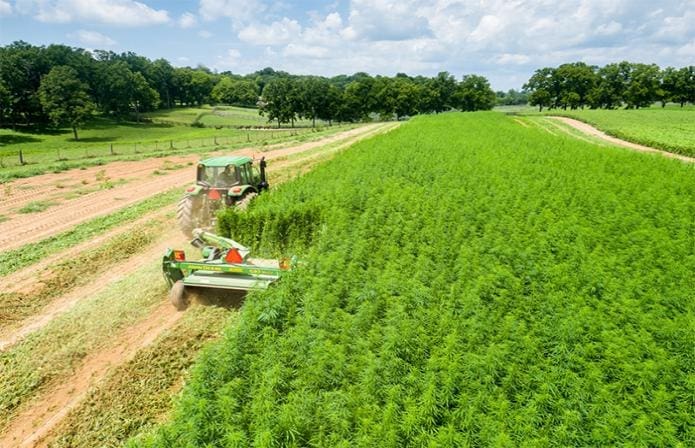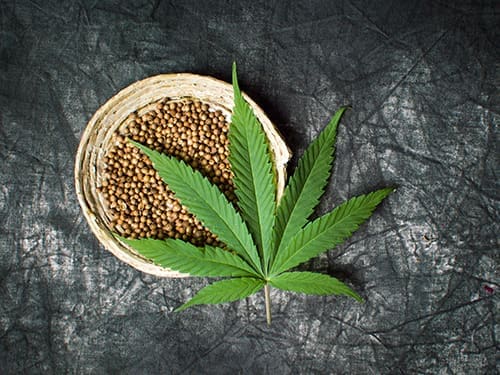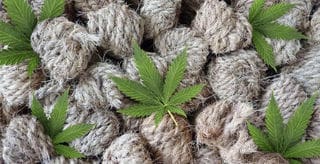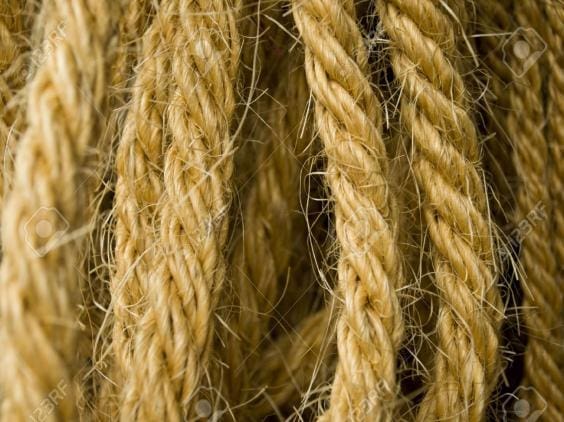Hemp is obtained from the Cannabis sativa plant, the hemp filaments are notable for their solidness and toughness. In their crude state hemp strands are profound earthy colored to yellowish dark. Hemp was one of the first and most regular plants to be made into texture around 10,000 years prior.
Harvesting of Hemp fiber
Hemp fiber is grown in a calm environment. It needs three and a half months with 10-12 crawls of precipitation to develop sufficiently. Hemp plants are additionally thermophilic and heliotropic, implying that they need a decent measure of warmth and sun, without which seed creation and biomass are settled. Beginning in Central Asia, it is presently cultivated in various nations from the USA, Italy, Canada, Germany, France, Philippines, and India.
The plant-developed fibers are thickly planted and grow up to 2-3 meters tall. They are collected after their development. These seeds can be utilized for additional harvests and sold as food.

Figure 2: Harvesting of Hemp
The hemp plant helps in recovering and detoxifying the soil. Apart from the normal advantages, falling leaves renew the soil with nutrients, oxygen, nitrogen. The underlying foundations of the hemp plant disperse and retain the energy of downpour, which keeps the seeds in place, and likewise ensures and treats the soil.
The base advantage of a hemp crop is as a turn crop. Hemp improves and balances out the soil where ranchers develop the harvests and provide them with weed-free farms.

Hemp fiber handling
Hemp handling does not require numerous synthetics, however, may require other engineered filaments and gums relying upon the item that will be made. The fiber is produced using a stalk and goes through numerous cycles to foster good results.
- Retting
Retting is a cycle that utilizes the activity of miniature life forms and dampness on plants to break up or decay away a large part of the cell tissues and gelatins encompassing bast-fiber groups, thus working with the partition of the fiber from the stem.
Field/dew retting is a kind of retting that should be possible on-ranch, while different varieties require a special service.
Water retting includes drenching the dry hemp stems in microorganisms-filled water tanks, lakes, or waterways.
Compound retting utilizes acids and unique chemicals to separate the segments of the bast filaments. They are bubbled in medicines comprising of synthetic substances like Sodium Hydroxide, Sodium Chloride, Sodium Sulphite, Hydrochloric corrosive, and Oxalic corrosive.
- Decortication
Hemp decortication is the cycle that eliminates the intense, woody inside of the hemp plant and isolates it from its delicate outside.
- Hackling
Hackling is when short and medium-sized filaments are brushed out of the tail.
- Spinning
To additionally treat the filaments for a better yarn, they are gone through a box of boiling water before being turned. This is known as wet turning. It mollifies the gelatin and considers further detachment of strands. Dry turning is additionally conceivable, yet the result is coarser. It is additionally less expensive.
- Baling
Hemp filaments are at last baled for long-haul stockpiling or transportation. Enormous, round bunches work best as they take into consideration better drying. and the hemp isn’t just about as firmly stuffed as in squares. They ought to be put away in a dry, less damp climate restricting any kind of water entrance to keep away from form. Utilizing plastic net wrap and twine would additionally guarantee its uprightness.

Figure 3: Hemp Fiber
Hemp Fiber Properties
It is exceptionally impervious to hurtful UV beams and willnot blur in the daylight. It is speedy drying and forestalls the development of microscopic organisms and buildup, making it hostile to microbial. Hemp withstands washing – each time it is washed, the strands become gentler and better. It additionally sheds an infinitesimal layer that abstains from ruining and uncovered a new surface. The actual texture is completely biodegradable and recyclable, adding to manageability. Even though it is difficult to blanch the normally dim shade of hemp fiber, it tends to be colored in splendid or more obscure shadings and does not blur without any problem.
The elasticity of hemp fiber is more prominent than other vegetal strands and twice that of cotton. This demonstrates that it is undeniably more solid and can be utilized for mechanical items requiring a sturdier texture. The hemp strands have minute recesses, making them incredibly breathable and retentive. The texture assists one with remaining cool in blistering climate and warm in cool climate due to the catacombic development, which permits air caught in the strands to be warmed by the body. The fiber has low versatility, so items made with hemp textures hold their shape.

Uses of Hemp fiber
Attire and Textiles – Hemp fiber has been utilized for millennia to make cloth for garments and materials. The material has various profitable properties like UV security and its microbial/hypo-allergenic advantages make it ideal for delicate skin.
Shoes – Hemp has additionally been utilized to make shoes that are agreeable and durable rather than cowhide. Calfskin can be costly; however, hemp fiber is much less expensive, not as tedious, and does not hurt creatures.
Paper – The most widely recognized and old utilization of hemp fiber is for paper. It can be a fill-in for wood fiber in mash and paper creation. It offers 4-5 times longer fiber and higher elasticity, adding to higher tear opposition.

Ropes and Cords – Hemp is perhaps the best fiber to make ropes and ropes because of its toughness and is more grounded than jute, material, and cotton. It was likewise utilized for sail apparatus and anchor strings.
The flexibility of Hemp adds to its yearly development pace of over 30%. It will just keep on expanding as individuals roll out the improvement to feasible, eco-accommodating items with little mischief to the climate. From the different properties of hemp, we can conclude that hemp is a material with a fantastic extent of supportability. It is not just natural but is also climate well disposed and modest in every aspect. Hemp is eco-accommodating and likewise benefits the soil and air where it is developed.
References
- https://www.the-sustainable-fashion-collective.com/2014/12/02/hemp-fibre-fabric-eco-benefit/
- https://www.nugistics.io/hemp-fiber-extraction-processing-properties/
Image source
- https://arc-anglerfish-arc2-prod-pmn.s3.amazonaws.com/public/KB2HJMSUEFGHLO2EDE7P6WRJEY.jpg
- https://www.ksre.k-state.edu/news/images/news-stories/2019/ag-natural-resources/ukhempharvest%20web.jpg
- https://njaes.rutgers.edu/fs1312/fs1312-main-1.jpg
- https://www.unnatisilks.com/blog/wp-content/uploads/2019/06/Group-2-2.jpg
- https://static.wixstatic.com/media/e4039a_531d48f0b94340799e5bdb0a4641127d~mv2.jpg/v1/fit/w_320%2Ch_600%2Cal_c%2Cq_80/file.jpg
- https://previews.123rf.com/images/mahroch/mahroch1007/mahroch100700050/7468070-detail-of-the-rope-made-of-natural-fibres-of-hemp.jpg
Author:
AISHWARYA PATIL
Department of Textile Design,
Sophia Polytechnic, Mumbai

